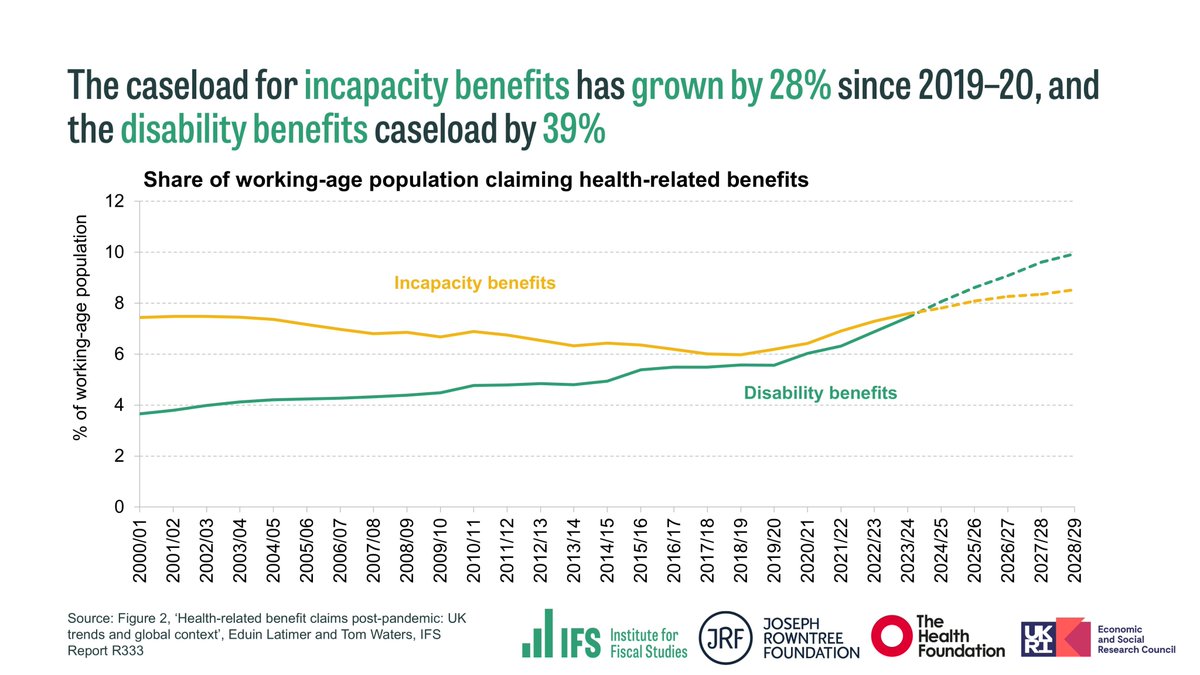NEW: In the absence of official scrutiny from @OBR_UK alongside Friday's announcement, we've provided our own #IFSGreenBudget fiscal forecasts with @citibank.
We find that planned tax cuts with stalling economic growth would leave debt on an unsustainable path.
THREAD: 1/13
We find that planned tax cuts with stalling economic growth would leave debt on an unsustainable path.
THREAD: 1/13

It is disappointing that Friday’s statement won't be accompanied by new official forecasts from @OBR_uk.
These would have shown that a combination of a weaker outlook for the economy and substantial tax cuts will lead to more borrowing and more debt.
[2/13]
These would have shown that a combination of a weaker outlook for the economy and substantial tax cuts will lead to more borrowing and more debt.
[2/13]

.@Citibank’s forecasts show an improved outlook for economic growth from the @bankofengland’s August forecast.
But it is still a far worse performance than forecast by @OBR_uk in March.
[3/13]
But it is still a far worse performance than forecast by @OBR_uk in March.
[3/13]

The rise in the outlook for inflation since March does cushion some of the hit to the cash size of the economy.
Citi forecasts that the cash economy will be only 2% smaller in 2026–27 than @OBR_uk’s March 2022 forecast. [4/13]
Citi forecasts that the cash economy will be only 2% smaller in 2026–27 than @OBR_uk’s March 2022 forecast. [4/13]

The fiscal cost of the Energy Price Guarantee is highly uncertain, however.
We assume it will cost well over £100 billion over the next two years, but the cost will depend on the path of energy prices and whether it is extended past the planned two years.
[5/13]
We assume it will cost well over £100 billion over the next two years, but the cost will depend on the path of energy prices and whether it is extended past the planned two years.
[5/13]
Even once the substantial Energy Price Guarantee has expired in October 2024, borrowing could still run at about £100 billion a year in the mid-2020s.
This is more than £60 billion a year higher than the @OBR_uk forecast in March.
[6/13]
This is more than £60 billion a year higher than the @OBR_uk forecast in March.
[6/13]

Reversing the NICs rise and cancelling the corporation tax increase would leave government revenues about £30bn a year lower than planned.
These large, permanent measures will account for nearly half of the medium-term increase in borrowing compared to March’s forecasts. [7/13]
These large, permanent measures will account for nearly half of the medium-term increase in borrowing compared to March’s forecasts. [7/13]
Spending on debt interest, state pensions and most working age benefits will be pushed up by inflation.
We also estimate that public service spending, set in cash terms, would need an extra £18bn just to restore spending to its intended level.
ifs.org.uk/articles/infla…
[8/13]
We also estimate that public service spending, set in cash terms, would need an extra £18bn just to restore spending to its intended level.
ifs.org.uk/articles/infla…
[8/13]
Persistent current budget deficits and rising debt as a share of national income would mean that the two main fiscal targets legislated only in January would be missed.
Even once the Energy Price Guarantee has expired, debt would be left on an ever-increasing path.
[9/13]
Even once the Energy Price Guarantee has expired, debt would be left on an ever-increasing path.
[9/13]

An increase in annual growth of above 0.7% of national income would be needed to stabilise debt as a % of GDP.
This is equivalent to the difference between the UK's real growth in the 25 years up to the financial crisis, and during the 2010s' stagnant austerity years.
[10/13]
This is equivalent to the difference between the UK's real growth in the 25 years up to the financial crisis, and during the 2010s' stagnant austerity years.
[10/13]
Getting that scale of increase in growth would require either a great deal of luck over a long period or a concerted change in policy direction.
Setting plans underpinned by the idea that headline tax cuts will deliver a sustained boost to growth is a gamble at best.
[11/13]
Setting plans underpinned by the idea that headline tax cuts will deliver a sustained boost to growth is a gamble at best.
[11/13]
The current cost of servicing debt remains low in historical terms.
But the recent sharp increases in debt interest spending show that in the long-term, a high stock of debt leaves future generations exposed to spending risks whenever interest rates and inflation rise.
[12/13]
But the recent sharp increases in debt interest spending show that in the long-term, a high stock of debt leaves future generations exposed to spending risks whenever interest rates and inflation rise.
[12/13]
“The government is choosing to ramp up borrowing just as it becomes more expensive to do so, in a gamble on growth that may not pay off.”
Read our full #IFSGreenBudget briefing, funded by @NuffieldFound> ifs.org.uk/publications/r…
[13/13]
Read our full #IFSGreenBudget briefing, funded by @NuffieldFound> ifs.org.uk/publications/r…
[13/13]

• • •
Missing some Tweet in this thread? You can try to
force a refresh


















